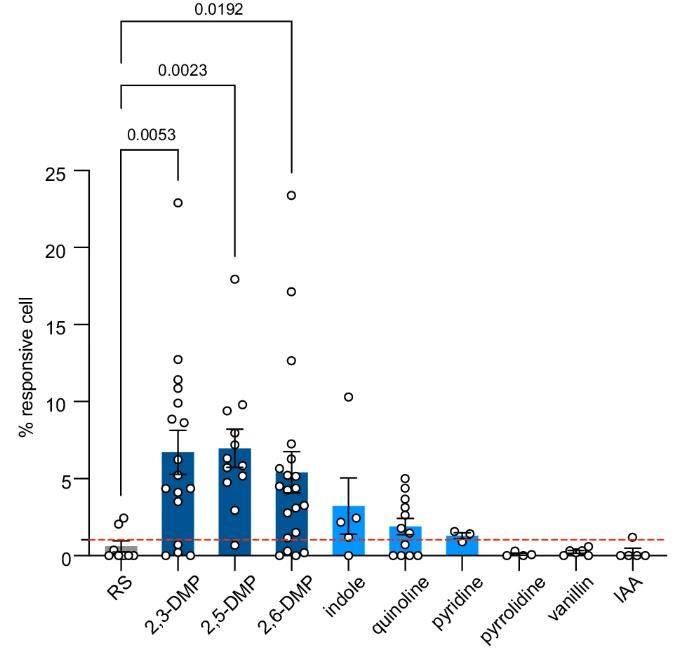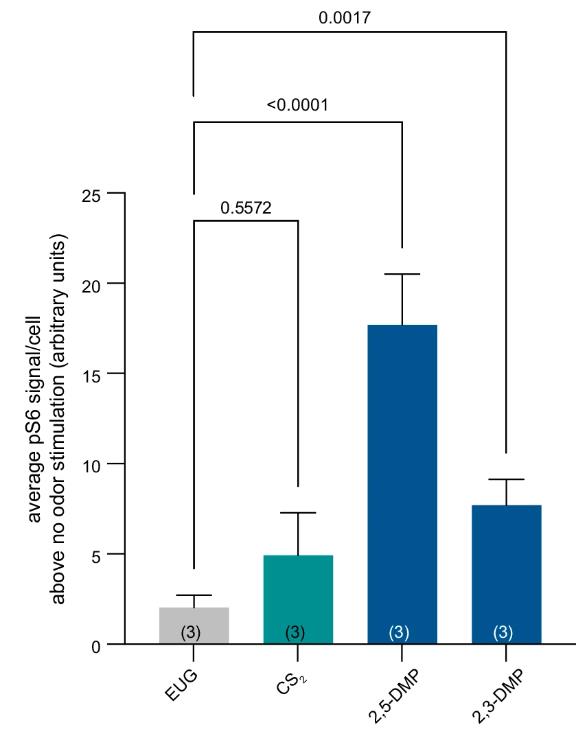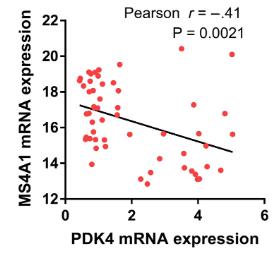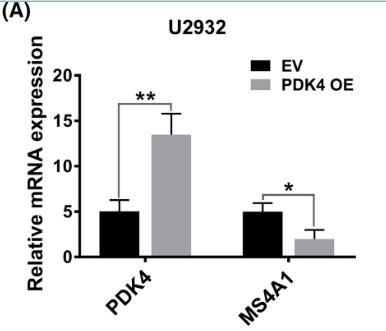Recombinant Ferret MS4A1 protein(Glu213-Pro297), His-tagged
| Cat.No. : | MS4A1-09F |
| Product Overview : | Recombinant Ferret (Mustela putorius furo) CD20 (Glu 213-Pro 297) was expressed in HEK293, with a polyhistidine tag at the C-terminus and a signal peptide at the N-terminus. |
- Specification
- Gene Information
- Related Products
- Case Study
- Application
- Download
| Species : | Ferret |
| Source : | HEK293 |
| Tag : | His |
| Protein Length : | 213-297 a.a. |
| Form : | Lyophilized from sterile PBS, pH 7.4. Normally 5 % - 8 % trehalose, mannitol and 0.01% Tween80 are added as protectants before lyophilization. |
| Molecular Mass : | The recombinant Ferret CD20 consists of 96 amino acids and has a calculated molecular mass of 11.3 kDa. The apparent molecular mass of the recombinant protein is approximately 25 kDa in SDS-PAGE under reducing conditions due to glycosylation. |
| Endotoxin : | < 1.0 EU per μg of the protein as determined by the LAL method |
| Purity : | > 90 % as determined by SDS-PAGE |
| Storage : | Samples are stable for up to twelve months from date of receipt at -20°C to -80°C. Store it under sterile conditions at -20°C to -80°C. It is recommended that the protein be aliquoted for optimal storage. Avoid repeated freeze-thaw cycles. |
| Reconstitution : | It is recommended that sterile water be added to the vial to prepare a stock solution of 0.2 ug/ul. Centrifuge the vial at 4°C before opening to recover the entire contents. |
| ◆ Recombinant Proteins | ||
| MS4A1-17HA | Recombinant Human MS4A1 protein, Fc-tagged, APC labeled | +Inquiry |
| MS4A1-0123H | Recombinant Human MS4A1 Full Length Transmembrane protein, His-tagged | +Inquiry |
| MS4A1-1933H | Recombinant Human MS4A1 Protein, MYC/DDK-tagged | +Inquiry |
| MS4A1-18H | Recombinant Human MS4A1 protein, His/trxA-tagged | +Inquiry |
| MS4A1-6579D | Active Recombinant Dog MS4A1 protein, His-tagged(Nanodisc) | +Inquiry |
| ◆ Cell & Tissue Lysates | ||
| MS4A1-819CCL | Recombinant Cynomolgus MS4A1 cell lysate | +Inquiry |
| MS4A1-1542HCL | Recombinant Human MS4A1 cell lysate | +Inquiry |
| MS4A1-1848FCL | Recombinant Ferret MS4A1 cell lysate | +Inquiry |
Case 1: Jiang HC, et al. Nat Commun. 2024
The mammalian olfactory system can recognize and distinguish millions of odors, triggering corresponding behavioral responses. We already know how olfactory neurons recognize odors and transmit signals, but how many innate, unlearned behaviors are activated by specific odors remains unclear. In this study, we found that a protein called CD20 (also known as MS4A1) is present in specific olfactory neurons in the main olfactory epithelium of the nasal cavity in mice. This protein is a mammalian olfactory receptor that recognizes compounds produced by predators. Normally, mice avoid the scent of these predators, but mice lacking the CD20 gene respond incorrectly.

Fig1. Quantification of responses of cells expressing MS4A1 protein to the indicated chemicals.

Fig2. Quantification of the average pS6 signal/MS4A1-expressing cell above the average pS6 signal/ MS4A1-expressing.
Case 2: Jiang D, et al. Cancer Sci. 2021
Diffuse large B-cell lymphoma (DLBCL) can be tricky because its variety often causes it to come back and resist treatments targeting CD20. When patients undergo chemotherapy with rituximab, the expression of MS4A1/CD20 tends to drop, leading to resistance, though the specifics are a bit of a mystery. Our research pointed out that DLBCL cells resistant to the R-CHOP regimen have higher levels of PDK4, an enzyme. What's interesting is that when there's too much PDK4, the cells grow more and don't respond well to rituximab. But if we dial down PDK4 or use a PDK4 inhibitor like dichloroacetic acid, the cells become more susceptible to rituximab, meaning they die off more easily. It turns out PDK4 causes a cell's energy production to switch from one method, oxidative phosphorylation, to another, glycolysis, which plays a part in resisting rituximab. Not only that, but PDK4 also seems to lower MS4A1/CD20 expression.

Fig1. Pearson correlation analysis for PDK4 and MS4A1 expression in 56 cases in the DLBCL cohort.

Fig2. Real-time quantitative PCR analysis of PDK4 and MS4A1 mRNA expression in U2932 cells.
Recombinant Ferret MS4A1, or CD20, is an interesting protein that's been getting a lot of attention in immunology and molecular biology research. It's part of a family of proteins known for their similar structures, and it's found on the surface of B cells at most stages, except for the very early and fully matured ones. What makes MS4A1 important is its role in helping B cells mature and transform into plasma cells. Plus, it might have a hand in regulating how these B cells get activated and multiply. Its unique expression pattern and functions make it a key player in understanding B cell development, providing potential insights for therapeutic interventions and treatments in diseases related to the immune system.
Recombinant Ferret MS4A1, often recognized as a crucial protein in the CD20 family, plays a significant role in scientific research and industrial applications. In the scientific arena, it's frequently used to explore immune response mechanisms, especially in ferrets, which are valuable models for respiratory diseases. The insights gained from these studies help in the development of treatments and vaccines for various infections that may affect both animals and humans. On the industrial side, recombinant Ferret MS4A1 is being utilized to innovate veterinary drugs and therapies, aiming to improve the health management of ferrets as companion animals or in research settings. Its versatility in these fields illustrates its importance as a tool for advancing both medical research and animal healthcare solutions.

Fig1. Roles of membrane-spanning 4A (MS4A) proteins in pathological states: friends or foes? (Irene Mattiola, 2021)
Not For Human Consumption!
Inquiry
- Reviews
- Q&As
Ask a Question for All MS4A1 Products
Required fields are marked with *
My Review for All MS4A1 Products
Required fields are marked with *
Inquiry Basket


